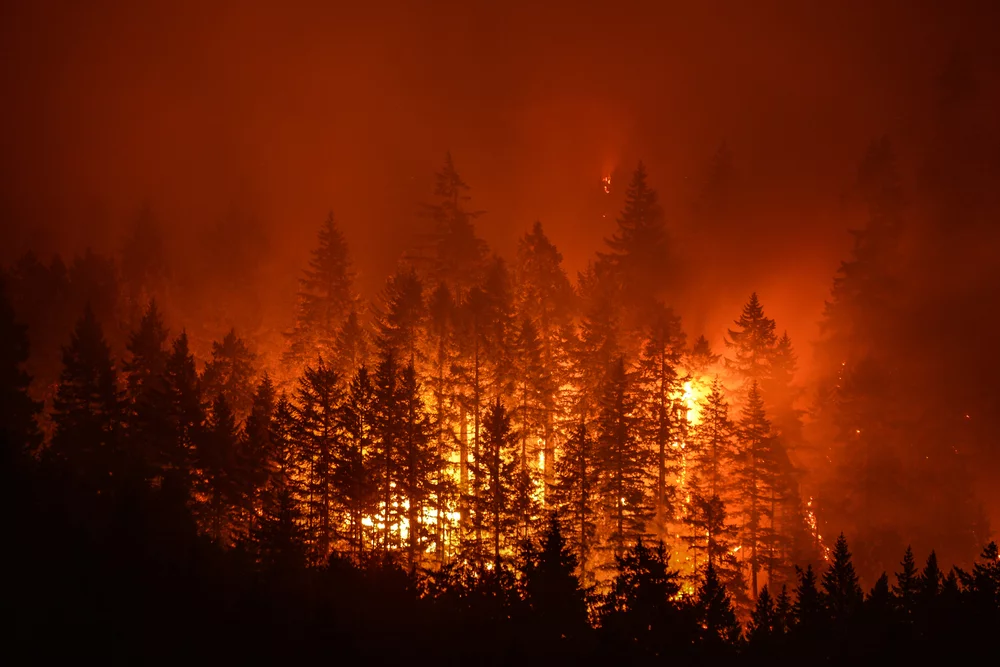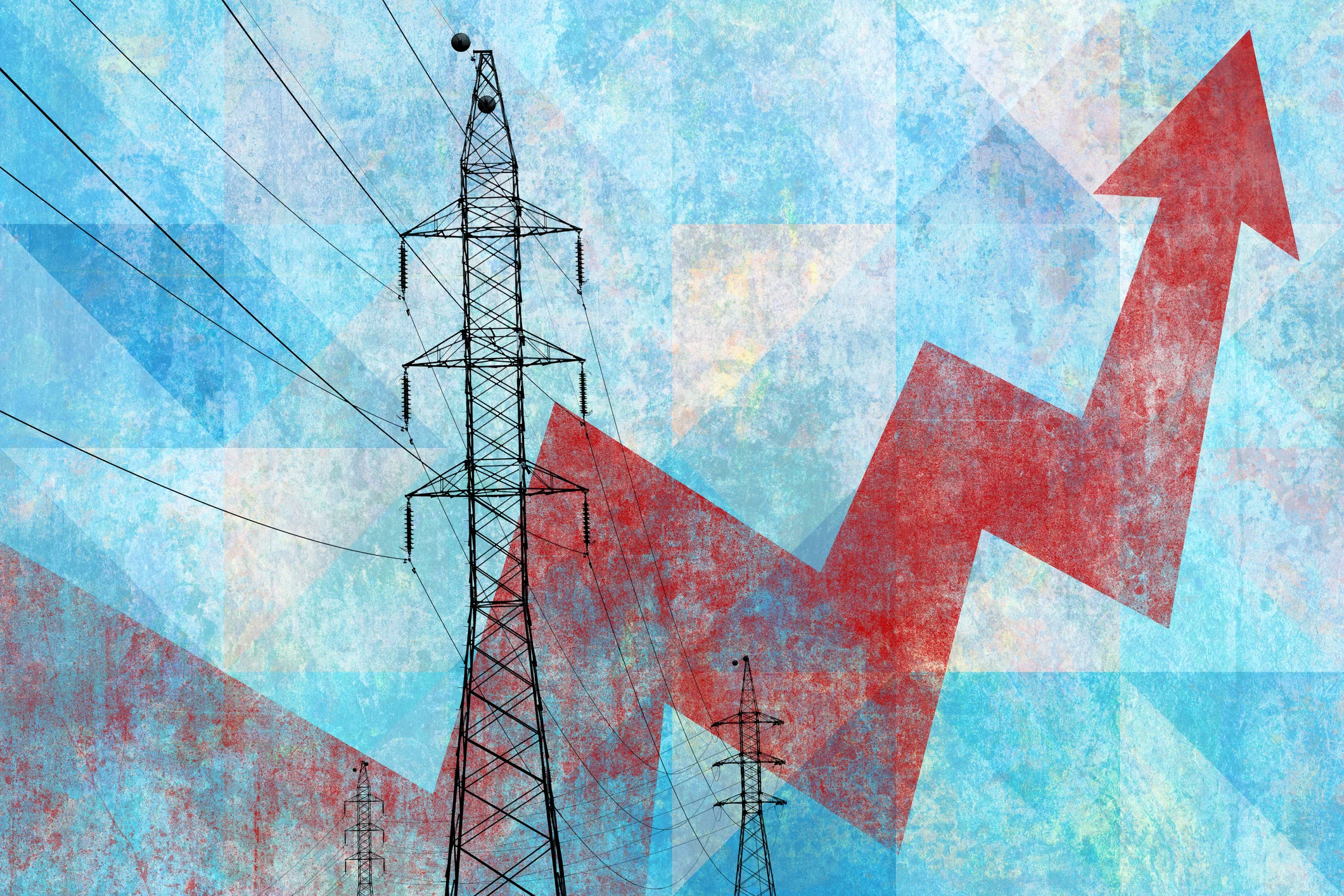In 2020, we started this article with “Across the western United States, wildfires are raging,” which remains true today. In the summer of 2020, five million acres—a bleak record at the time—had burned even before reaching the traditional height of the fall fire season. Cal Fire said more than 17,400 firefighters were battling 26 major wildfires in the Golden State. Utilities were forced to use rolling blackouts to shut down transmission to residents and businesses as last-ditch fire prevention tools with significant personal and economic consequences, a real-world challenge that demand flexibility can solve.
Burning Down the House
Aside from being an amazing Talking Heads song, increased wildfire activity can lead to significant damage for homeowners, simultaneously destroying costly utility infrastructure. According to the Western Fire Chiefs Association, wildfire activity is on the rise. During the 1990s, wildfires claimed about 3.3 million acres of land caused by roughly 78.6K fires. Since the turn of the century, wildfires have burned an average of 7.0 million acres, or roughly the size of Rhode Island every year.
Wildfires have always been a problem for electric utilities, but that challenge is escalating rapidly, prompted by environmental conditions brought on by climate change. Wildfires create problems for utilities as they destroy not only physical infrastructures but also slow any progress in service restoration by blocking access to damaged areas. As these wildfires continue to spread, utilities must look for low-cost, effective solutions to meet service needs in affected areas. Fortunately, demand flexibility programs like demand response, EV managed charging, or virtual power plants can provide the load management opportunities that utilities need to meet customer needs without excessive, peak energy purchasing costs.
Demand Flexibility & Innovations
California has a well-deserved reputation as an innovator in renewables, energy storage, and distributed energy resources (DERs). But, while the state’s climate-friendly advances—plus thousands of megawatts reduced through voluntary conservation by residents and businesses—helped reduce the load, it hasn’t been enough to prevent these drastic measures.
For example, in August 2020 the U.S. Department of Energy had to issue an order to power up to three natural gas plants so that the California Independent System Operator (CAISO) could meet the “exceptional levels of electricity demand” sparked by the intense heat wave and resulting lightning and wildfires. With the order, CAISO also requested a relaxation of environmental and air quality permit standards for the plants.
We can, and must, do better for our people and our planet. Flexible energy strategies including demand flexibility programs and distributed energy resource (DER) initiatives are crucial to the future of grid stability and are designed to lower carbon emissions while enhancing potential revenue streams. As such, these programs offer both an opportunity to meet needs, while simultaneously supporting the decarbonization and electrification efforts needed to mitigate the damaging effects of climate change: including wildfires.
Off-Peak Load Management
In a 2019 Vox article, David Roberts noted that just by using energy at different times of the day, we could shave 15% off-peak electricity needs by 2030, saving billions of dollars.
“Lots of power consumption is not time-sensitive. The iconic case here is your home water heater. Water retains thermal energy pretty well. You can heat the water in the tank at any time and still have hot water available when you want,” he wrote continuing, “So in theory, water-heating energy consumption can be time-shifted, from times of high demand to times of low demand, without any loss of service.
Many power-intensive industrial processes are largely automated, so they can, in theory, be run at any time. Electric vehicles can be charged at different times of the day. Through the use of distributed energy resource management systems (DERMS), utilities can aggregate the distributed energy resources (DERs) like solar, battery, electric vehicles and EVSE, and smart home devices like thermostats and water heaters in their area to shift load through one of several demand flexibility programs to off-peak hours of usage.
Load shifting is useful during emergencies like wildfires, as it affords an alternative path for utilities to meet energy demand without the need for upfront infrastructure upgrades. Especially considering the damage caused by wildfires, finding a quick and effective solution to load management in affected areas is critical to meeting demand when it’s needed the most.
Challenges to Demand Flexibility
Historically, demand flexibility programs, specifically demand response, were enabled through the use of physical devices attached to customer behind-the-meter assets. But as more devices feature Wifi and more homes support broadband internet, it has become easier to manage these assets in aggregate to meet demand.
These residential behind-the-meter assets have proven intermittent to some grid operators. Fortunately, new capabilities like Topline Demand Control can speak to that specific challenge by rendering demand as controllable as a gas turbine. Through the combination of a Grid Edge DERMS, forecasting technologies, and model predictive control, grid operators can guarantee the output of their programs.
For example, if a utility needs to achieve a specific volume of energy, rather than running a demand flexibility program and hoping that the participation, opt-out rates, and weather conditions remain in your favor, Topline Demand Control can produce reliable outcomes from the DER assets already in communities. In fact, Wood Mackenzie reports that DER adoptions could double by 2027, creating even more opportunities for grid operators to dependably achieve their demand flexibility initiatives.
Demand Flexibility Strategies Conclusion
To meet global decarbonization goals designed to mitigate climate change, utilities must adopt demand flexibility strategies. If our industry adopts aggressive steps to increase load flexibility, we can meet consumer demand and help mitigate the effects of climate change that have led to the increasingly widespread devastation from wildfires in the years to come.
To all our friends out west or anywhere affected by wildfires and climate change: stay safe.
This article was originally published on September 17, 2020 with updates made on July 19, 2024. These wildfires rage on.





